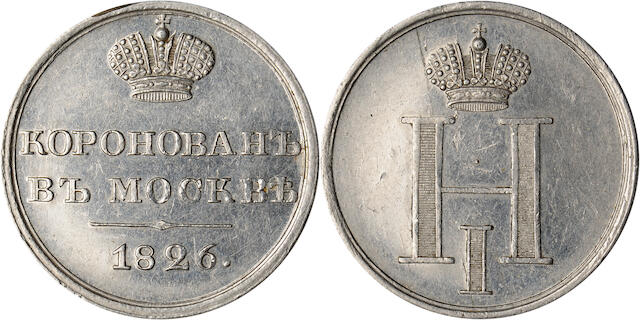Indicating 1 Reichsthaler = £ 0.15 and where 1 Ozt = 2.128 Loth köln.
1862: 1 Troy Oz. Platinum (Berlin: Semi-Mfg, Bulk) ~ Thl 9.
1862: 1 Troy Oz. Platinum (Berlin: Mfg, Retail) = Thl 12.77
18) Ten platinum dishes and crucibles with lids and tubes. Platinum-weight 12 Lth. à Loth 6 Th.
Citation: Special-Catalog der gewerblichen Ausstellung des Zollvereins (1862)
Where weights calculated by the 'new' Pfund of 30 Loths (500 Grammes) 1 Loth = 0.5359 Troy Ounce (new 1 Unze = 1.07 English Troy Ounces), but the weight-price of Johnson & Matthey's exhibit in London is as likely to be English Troy Ounce. Shipping and insurance costs are not factored.
German prices at the 1862 London Exhibition show a competitive devaluation in Platinum prices was well underway, from 1857.
1862: 1 Troy Oz. Platinum (Eng. Mfg, Producer, pre-import) = Thl 8.41 - 9.35
1862: 1 Troy Oz. Platinum (Eng. Mfg, bulk, pre-import) ~ Thl 9. - 10.
1862: 1 Troy Oz. Platinum (semi-mfg, whols./ret.) ~ Thl 11.20 (USD$ 9.37)
UK, 1862:
At the 1862 London Exhibition, the Berlin agent for Luhme offered Platinum ware for 6 Thalers per Loth, lower than the Berlin price in 1859/60. Presuming a same rate for the semi-manufactured Platinum applied (above):
Where 1 Loth = 0.469 Ozt,
1862: 1 Troy Oz. Platinum (Berlin: Mfg, Retail) = Thlr. 12.785 (£ 1.90)
Citation: The illustrated catalogue of the industrial department; International exhibition, 1862 p.79
1862: 1 Troy Oz. Platinum (UK: Semi-mfg, Trade) = £ 1.35 (Thlr. 9; $ 6.58)
1862: 1 Troy Oz. Platinum (UK: Mfg, Trade) = £ 1.35 - 1.50 (Thlr. 9 -10.)
1862: 1 Troy Oz. Platinum (Mfg, Berlin Retail) = Thlr. 12.7683 (£ 1.915)
Citation: Fortschritte und Leistungen der chemischen ..., Vol. 8 (1862)
1862: (same prices as 1860)
Where the Loth was 14.40 g., the Quentchen ~1.6g.
1862: 1 Ounce Chlor-Gold (Photo. Chemical, Retail) = Thlr. 25.9196
1862: 1 Ounce Chlor-Platin (Photo. Chemical, Ret.) = Thlr. 9.72
The 1826 Coronation Medal of Nicholas I (issued at varying weights: the maximum 15.6 g) sold for Thlr. 138. ($ 109.50) ; this medallion was sent to von Humboldt by Count Kankrin in 1827. (See Im Ural und Altai: Briefwechsel zwischen Alexander von Humboldt und Graf Cancrin [1859] p. 5: "Nr. 8. Die große Krönungsmedaille.") It should be assumed .970 Fine Pt., but this size was (perhaps then known to be) exceedingly rare.
The 1862 numismatic premium was 2,957% the price of manufactured Platinum.
1862: 1 Troy Oz. Platinum (Numismatic Value) = Thl 275.15 (~£ 20.5)
.... USD$ 218.22

Assuming 54 Grains Troy per ducat, a "98 Ducat" coin weighed 11.025 Ozt Fine Gold and sold for $ 119.59
{In Silver (75.2 x 5.6 mm)The Commemoration of the visit of Louis-Philippe, Queen Marie-Amélie and the Royal children to the Mint, 1833 medallion by Jean-Jacques Barre}
Medals offered to Humboldt by several sovereign and scholarly institutions, including six gold medals worth 670.75 ducats, seven in platinum, twenty-three silver medals and 100 bronze medals. Part of the gold medals were withdrawn from sale because it does not appear that purchasers desired give a price higher than intrinsic value. We noticed in particular octagon gold medal representing the Gate Moscow, worth Thlr. 300 ; the gold medal offered by Humboldt listeners at the end of his course in 1828, worth Thlr. 225; gold medal Pfeuffer, bringing the bust of Sophocles, Thlr. 250 - Gold Medal offered in 1833 by the King Louis-Philippe, souvenir of a visit to the Paris Mint: the law, the king and queen of French; the back nine princes and princesses of the Orleans family. This medal, the weight of 98 ducats, was sold Thlr. 293 - The same silver Thlr. 34 - Platinum Medal, struck the coronation of Emperor Nicolas in 1826, Thlr. 138 - Memorial Gold Medal for the completion of Smolus convent in St. Petersburg in 1835, Thlr. 190 th. - Gold Medal by Mr. Kin, price of the Mining Institute in Russia, worth 62 1/2 ducats. - Gold Medal, Tolstoy's portrait of Princess Helene, 77 thlr.- Medal associate member of the Institute of France, 40 thlr, etc., etc.
Citation: Gazette des beaux-arts, 1863; Vol. 1; Vols. 7-8 p.367
No comments:
Post a Comment